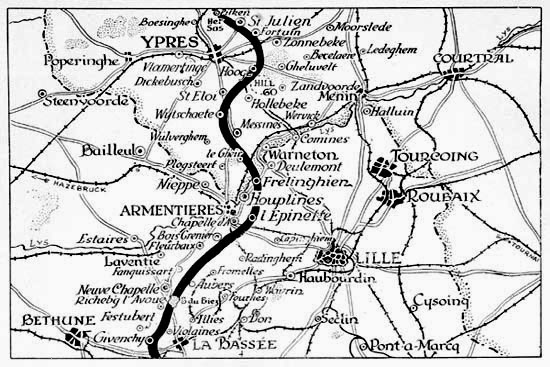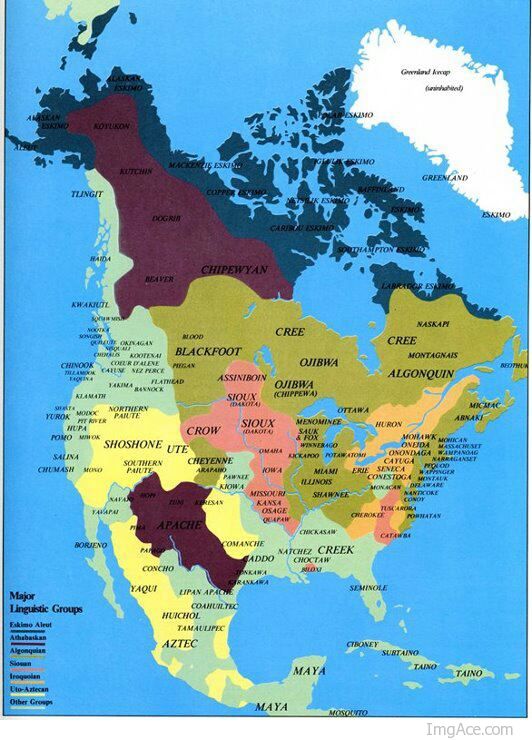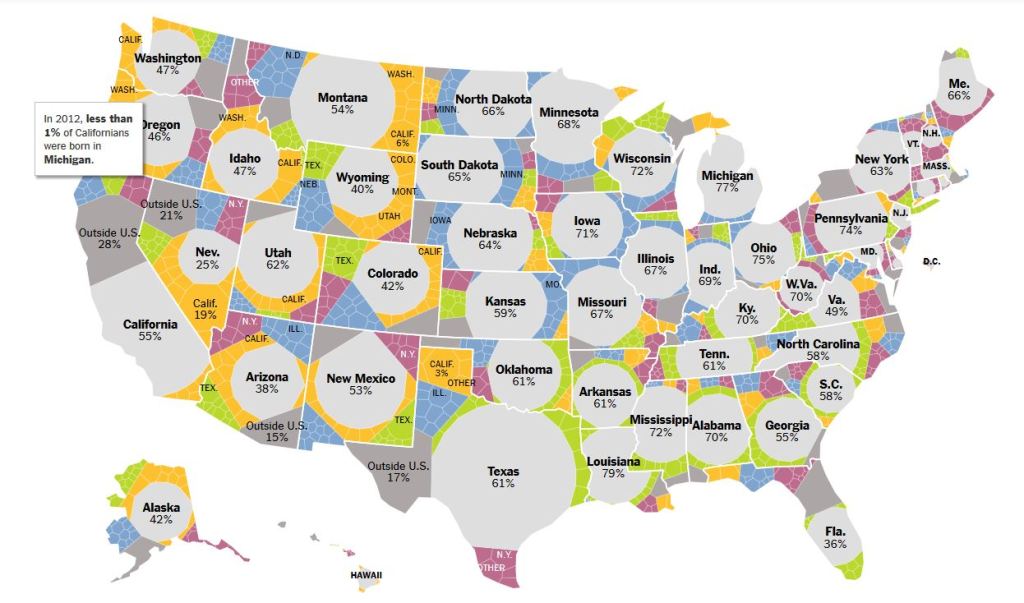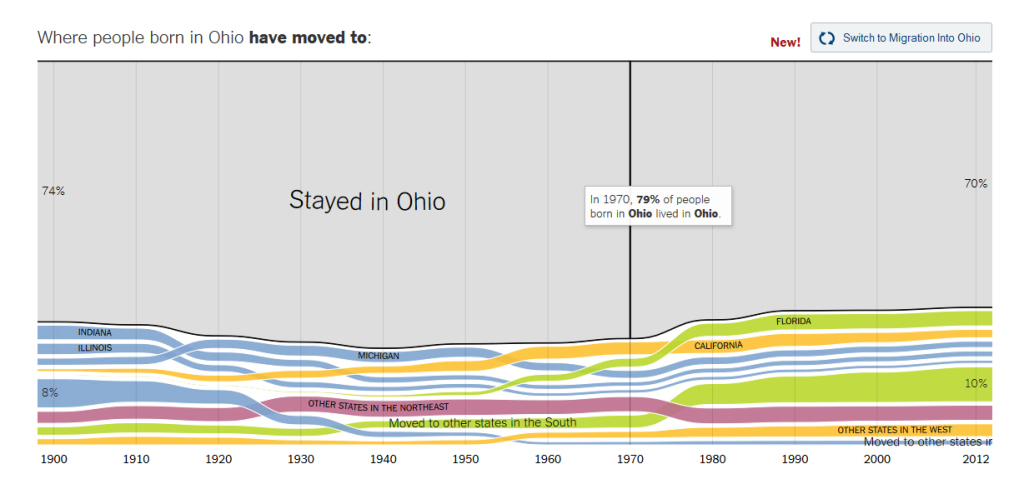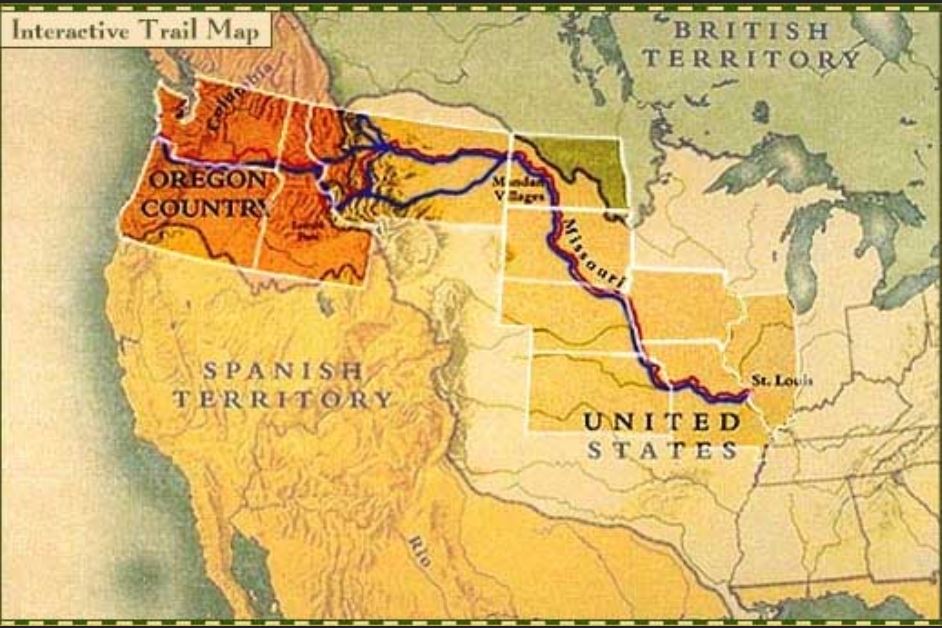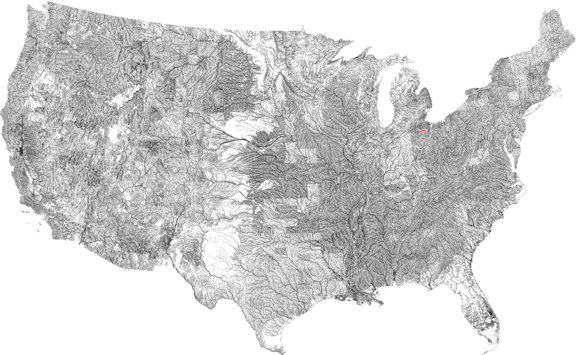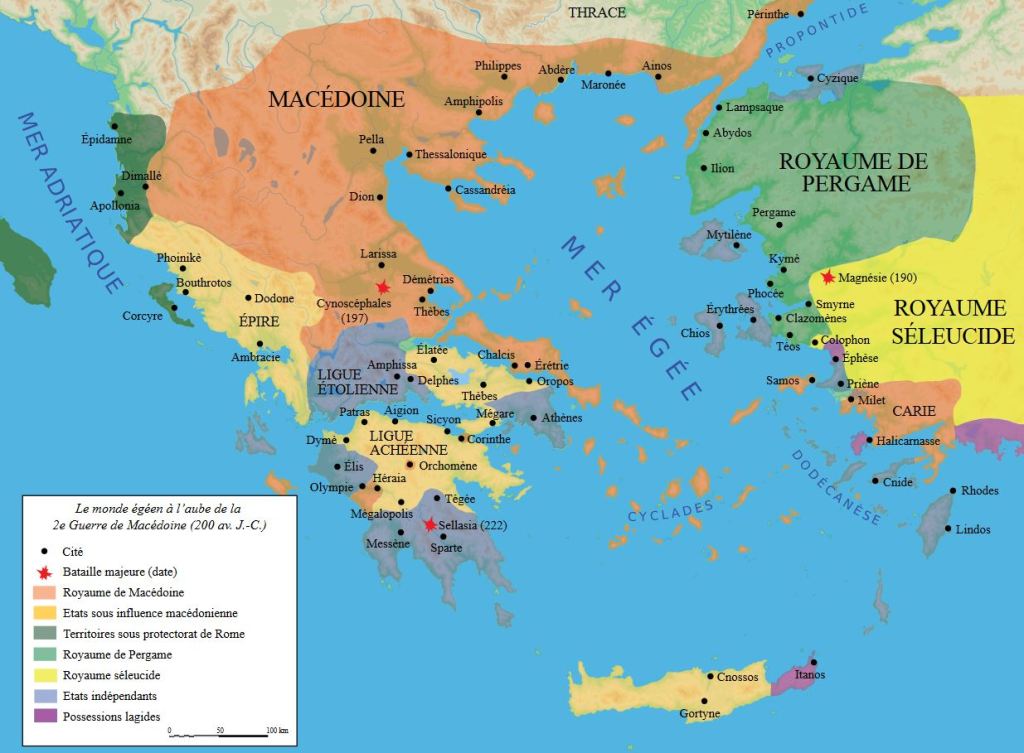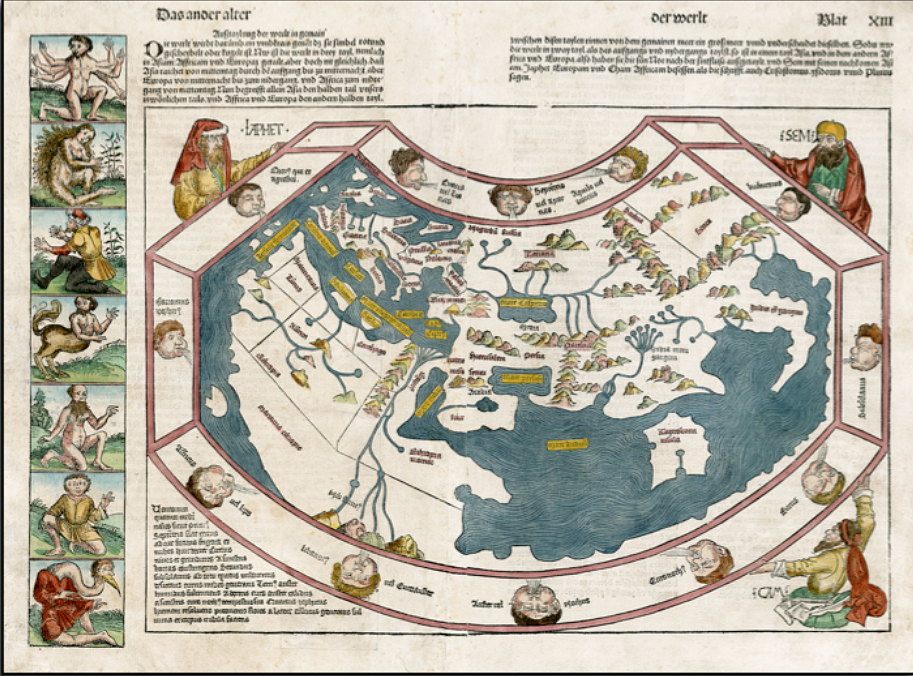With the media Ebola circus reaching hysterical levels, the World Health Organization announces that the outbreak has ended in Nigeria. And this week’s Map is one of the most important made in the modern world. Known as the Ghost Map, it shows a section of Soho, in London in the year 1854, and it was drawn by the physician John Snow.
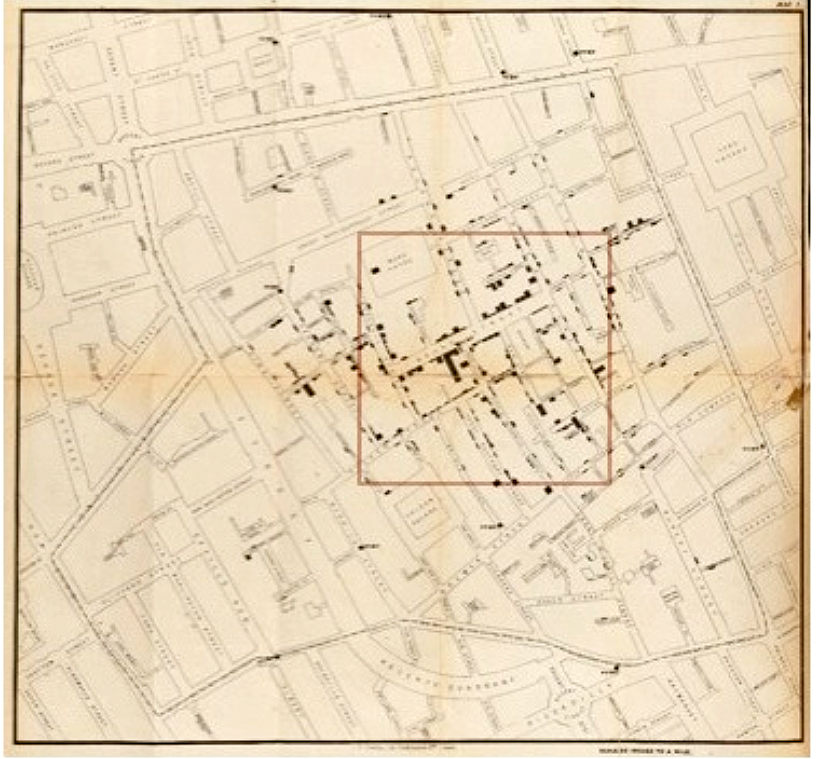
It was given its spooky title because it indicates the number of deaths at each residence during a particularly virulent outbreak of cholera, the horrific disease that causes violent expulsion of fluids from both ends of the victim, until they die. Although not always fatal, it was a fearful scourge in nineteenth-century Europe, and it still kills thousands of people annually around globe in our own time. It is spread through human waste infecting drinking water. Snow was the first to discover this.
In 1854, the world medical community believed diseases like cholera and typhus were caused by bad air, or “miasma.” Dr. Snow had treated cholera victims in a mining community before moving to London, and wondered why he could breathe the same air as they but did not contract the disease. He risked his life to plunge into the neighborhood suffering the most fatalities during the London outbreak, where he conducted a door to door census of cholera victims.
Snow discovered that the area with the most victims were near a particular public water pump on Broad Street. He further discovered that victims who did not live there either worked at a nearby factory, or had water fetched from the pump because they thought it tasted better than their local pump. Meanwhile, the local brewery had no victims amongst the employees, because they were given a daily ration of ale and according to the owner none of them drank water at all.

He alerted authorities who removed the pump handle and had local water supplies treated with chlorine, which led to the end of the outbreak. It was learned much later that an old cesspit had been paved over and forgotten about was the source of the contamination.
Although this was not the first time someone made a map showing the distribution of cholera victims during an outbreak, it was the first time that cholera outbreaks were linked to drinking water. As a result, Dr. John Snow is credited as the father of modern Epidemiology, which the World Health Organization “defines as the study of the distribution and determinants of health-related states or events (including disease), and the application of this study to the control of diseases and other health problems.”
Snow had already established his reputation as a champion of early anesthetics, having perfected devices for administering chloroform and ether. In 1853, he successfully used chloroform on Queen Victoria during the birth of her eighth child, which increased public acceptance of anesthesia. He also performed the same procedure four years later, for the birth of her ninth child.
Dr. John Snow died of a stroke four years after creating his Ghost Map. Unfortunately, his assertions about the distribution of cholera through drinking water were rejected by most of the medical minds of the time. In the 1870s the established medical community officially declared miasmata as the source of cholera infection. An Italian doctor had first seen cholera bacteria through a microscope the same year Snow made his map. It was rediscovered and isolated by a German scientist in 1884, but even then people failed to recognize that it was spread through drinking water, clinging to the bad air model. And as late as the major typhus outbreak in Germany in 1901, authorities refused to abandon such mistaken ideas.
It remains difficult to get populations to understand the importance of clean drinking water. In fact, Cholera is more common worldwide today than any time since World War II, as can be seen in this bonus map.
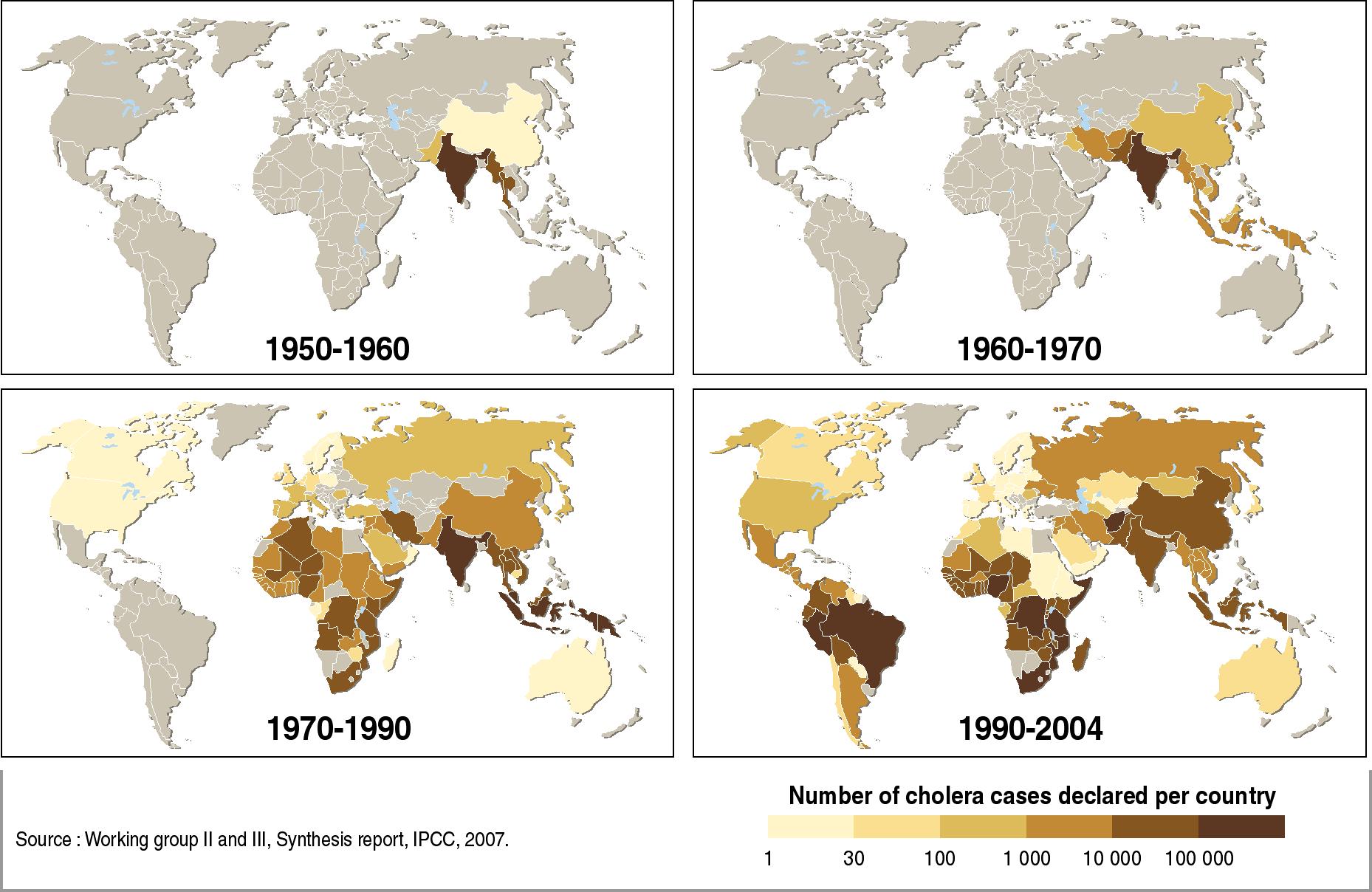
It is sad statement on the disparity of wealth and health in the twenty-first century. At least the disease is treatable and reduced to a rarity in the industrialized “first world.”
Dr. John Snow is remembered today by chapters of the John Snow Society, and there is even a pub in London that bears his name, and has his portrait on the sign. The bartenders claim to have the actual handle removed from the Broad Street pump by John Snow in 1854.
John Snow and his Ghost Map figures prominently in a new series on PBS called How We Got to Now, in the episode entitled Clean, which describes “how our battle against dirt created the sidewalk, the swimming pool, the flat screen and the iPhone” – not to mention modern skateboarding. This excellent six-part series is hosted by the popular American science author Steven Johnson, and explores how ideas arise and develop, often with unintended and far-reaching consequences. It is sort of a combination of earlier science series like Carl Sagan’s Cosmos and James Burke’s Connections. I recommend it highly.
Ghost Map Related Reading:
On the Mode of Communication of Cholera, Excerpts from John Snow’s own 1855 publication, at the website of the University of California at Irvine.
John Snow Society – official website
A Visit to the John Snow Pub – a blogger’s tail
World Health Organization – the official website
How We Got To Now – the PBS Series
